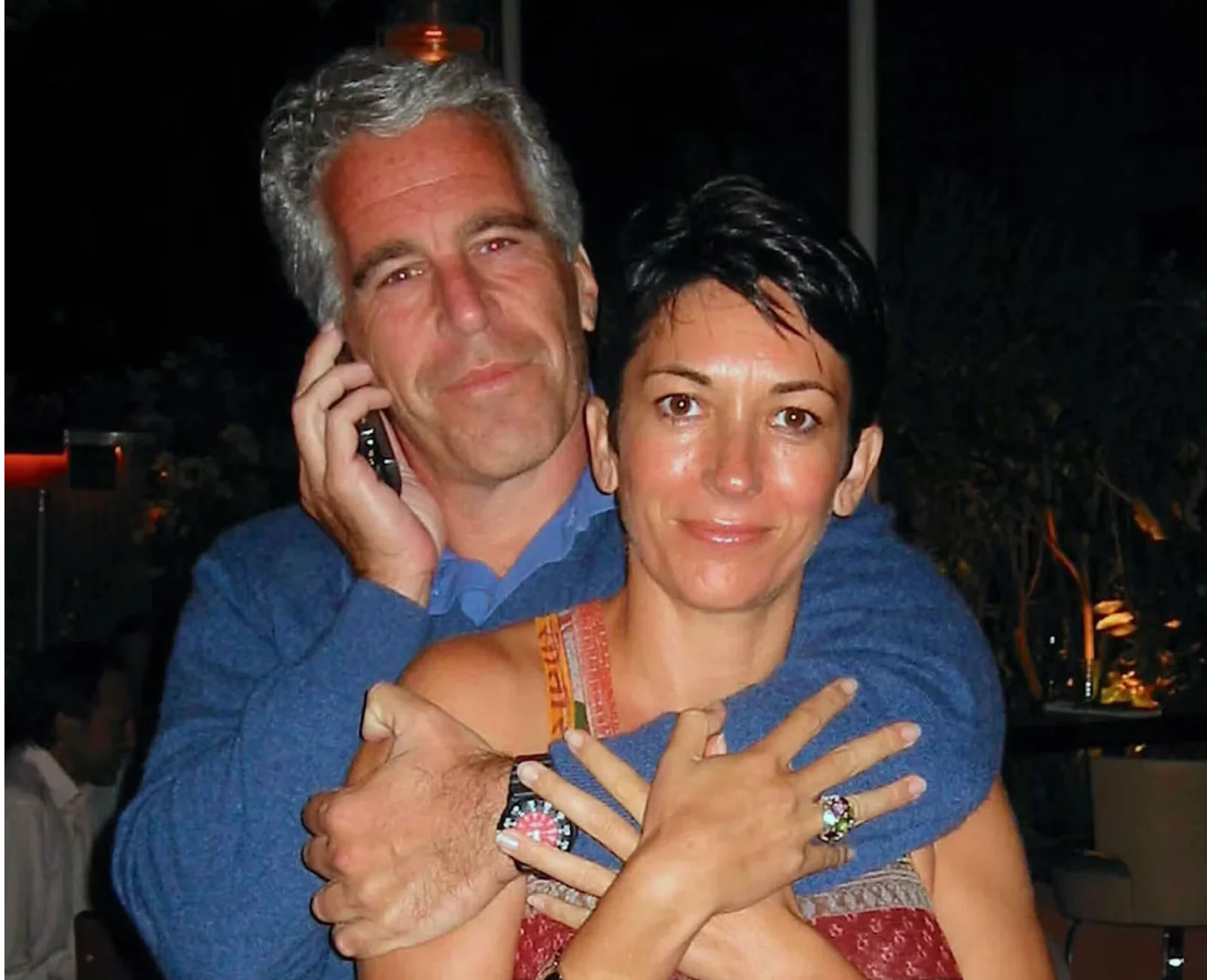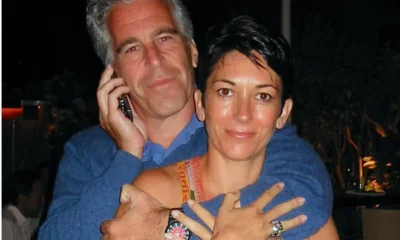News
Kamala Harris Won’t Run for California Governor, Eyes 2028

Former Vice President Kamala Harris has officially announced that she will not run for governor of California in 2026, ending months of speculation over her political future and immediately fueling discussions over a possible third bid for the White House in 2028.

In a statement released Wednesday, Harris explained, “Over the past six months, I have spent time reflecting on this moment in our nation’s history and the best way for me to continue fighting for the American people and advancing the values and ideals I hold dear. I have given serious thought to asking the people of California for the privilege to serve as their governor. I love this state, its people and its promise. It is my home. But after deep reflection, I’ve decided that I will not run for Governor in this election.” Harris added that for now her leadership and public service would not take the form of elected office, but she remains committed to helping elect Democrats across the nation and will share more about her future plans in the coming months.
What Led to Her Decision
Harris, who has largely stayed out of the spotlight since her defeat to President Donald Trump in the 2024 presidential election, spent several months weighing whether to pursue the governorship, seek a third run for president, or exit electoral politics altogether. Political observers had considered her a frontrunner if she entered the race to succeed term-limited Governor Gavin Newsom. However, Harris showed limited public enthusiasm for the role, rarely attending major political events in the state or engaging with key labor and party leaders over the past year.
Insiders say Harris’s decision reflects her desire to keep her options open for a potential 2028 presidential campaign. “This absolutely keeps the door open for 2028,” one source told NBC News. The timing of her decision—well ahead of the 2026 gubernatorial primary—allows other Democratic contenders to organize their bids for California’s top executive office.

Implications for 2028—and the Democratic Party
Harris’s move immediately shifts the dynamics of the upcoming Democratic presidential primary. As the most recognizable national Democrat not currently holding office, she enters the 2028 conversation with a powerful fundraising network and high profile, but analysts warn that her 2024 loss and the shifting political landscape mean she’s far from a presumptive nominee.
Several prominent Democrats, including California Governor Gavin Newsom, Transportation Secretary Pete Buttigieg, and Gov. J.B. Pritzker of Illinois, are already exploring their own presidential ambitions. With no sitting Democratic president in 2028, the field is likely to be crowded and fiercely competitive.
Some party strategists suggest that Democrats are looking for a “new generation” of leadership to help reset after the loss to Trump, while others believe Harris deserves a chance to run on her own terms, feeling she was put in a “tough spot” as Biden’s late replacement in 2024.
Harris’s Next Steps
While she remains out of elected office, Harris has indicated she plans to amplify her voice in public service, possibly through advocacy, supporting Democratic candidates, writing, or activism. Her statement also reflected admiration for those in public life and called for a willingness to pursue change through “new methods and fresh thinking—committed to our same values and principles, but not bound by the same playbook”.
With her decision made, the political world now shifts its attention to Harris’s next move—and whether she will launch a campaign to become the first woman president of the United States in 2028. For now, she remains a key figure in Democratic politics, with all options still on the table.
News
Fugees Rapper Pras Michel Sentenced to 14 Years in Campaign Scandal

Pras Michel, Grammy-winning rapper and founding member of the iconic group the Fugees, has been sentenced to 14 years in federal prison for his role in a sprawling illegal campaign finance and foreign influence scheme. The sentencing was handed down on November 20, 2025, by U.S. District Judge Colleen Kollar-Kotelly in Washington, D.C., following Michel’s conviction in April 2023 on charges including conspiracy, money laundering, acting as an unregistered foreign agent, and witness tampering.
At the heart of the scandal was Michel’s involvement in funneling over $120 million from fugitive Malaysian financier Low Taek Jho—known as Jho Low—into the 2012 reelection campaign of former President Barack Obama. Prosecutors detailed how Michel helped hide the origin of foreign donations through shell companies and straw donors, violating U.S. campaign finance laws that prohibit foreign contributions. Beyond the Obama campaign, Michel also engaged in illegal lobbying efforts during the Trump administration to obstruct investigations into Low’s role in the notorious 1MDB scandal, a massive Malaysian sovereign wealth fund corruption case.
Prosecutors described Michel as having “betrayed his country for financial gain,” persistently lying and manipulating government entities over nearly a decade. They advocated for a life sentence, emphasizing the severity of his offenses and the threat posed to U.S. national security. Testimonies during the high-profile trial included notable figures such as Hollywood actor Leonardo DiCaprio and former U.S. Attorney General Jeff Sessions.
Michel’s defense team condemned the harsh sentence as “entirely disproportionate,” arguing that similar cases resulted in lighter penalties, and pointed out that Michel received no espionage charges—a key consideration in foreign agent prosecutions. They announced plans to appeal the verdict and sentence. Following the prison term, Michel faces three years of supervised release and forfeiture of more than $64 million tied to the illegal campaign finance activity.
Michel, who shot to fame in the 1990s as part of the Fugees alongside Lauryn Hill and Wyclef Jean, now confronts a dramatic fall from grace that underscores the extensive consequences of illicit foreign influence in American politics. Despite this setback, his representatives remain grateful for the support received, stating that this chapter does not mark the end of his journey.
This landmark case serves as a stark reminder of the importance of safeguarding U.S. elections from covert foreign interference and the serious repercussions for those who betray democratic principles for financial gain.bbc+4
- https://www.bbc.com/news/articles/cg7n7l70vzgo
- https://www.aljazeera.com/news/2025/11/21/fugees-rapper-sentenced-to-14-years-in-prison-over-illegal-obama-donations
- https://www.wsj.com/us-news/fugees-member-sentenced-to-14-years-for-campaign-donation-scheme-7bbb7850
- https://www.youtube.com/watch?v=ow4bcn8mkIM
- https://www.lemonde.fr/en/international/article/2025/11/21/fugees-rapper-pras-michel-sentenced-to-14-years-in-prison-in-us-campaign-financing-scandal_6747698_4.html
- https://www.politico.com/newsletters/politico-influence/2025/11/20/fugees-star-sentenced-to-14-years-in-fara-case-00664124
- https://www.justice.gov/archives/opa/pr/us-entertainer-convicted-engaging-foreign-influence-campaign
- https://apnews.com/article/852e3aa86a604597b99c5e81179a7b6b
- https://www.reddit.com/r/hiphopheads/comments/11g6you/the_fugee_the_fugitive_and_the_fbi_how_rapper/
News
Epstein Files to Be Declassified After Trump Order

Former President Donald Trump has signed an executive order directing federal agencies to declassify all government files related to Jeffrey Epstein, the disgraced financier whose death in 2019 continues to fuel controversy and speculation.
The order, signed Wednesday at Trump’s Mar-a-Lago estate, instructs the FBI, Department of Justice, and intelligence agencies to release documents detailing Epstein’s network, finances, and alleged connections to high-profile figures. Trump described the move as “a step toward transparency and public trust,” promising that no names would be shielded from scrutiny.
“This information belongs to the American people,” Trump said in a televised statement. “For too long, powerful interests have tried to bury the truth. That ends now.”
U.S. intelligence officials confirmed that preparations for the release are already underway. According to sources familiar with the process, the first batch of documents is expected to be made public within the next 30 days, with additional releases scheduled over several months.
Reactions poured in across the political spectrum. Supporters praised the decision as a bold act of accountability, while critics alleged it was politically motivated, timed to draw attention during a volatile election season. Civil rights advocates, meanwhile, emphasized caution, warning that some records could expose private victims or ongoing legal matters.
The Epstein case, which implicated figures in politics, business, and entertainment, remains one of the most talked-about scandals of the past decade. Epstein’s connections to influential individuals—including politicians, royals, and executives—have long sparked speculation about the extent of his operations and who may have been involved.

Former federal prosecutor Lauren Fields said the release could mark a turning point in public discourse surrounding government transparency. “Regardless of political stance, this declassification has the potential to reshape how Americans view power and accountability,” Fields noted.
Officials say redactions may still occur to protect sensitive intelligence or personal information, but the intent is a near-complete disclosure. For years, critics of the government’s handling of Epstein’s case have accused agencies of concealing evidence or shielding elites from exposure. Trump’s order promises to change that narrative.
As anticipation builds, journalists, legal analysts, and online commentators are preparing for what could be one of the most consequential information releases in recent history.
News
Yolanda Adams Questions Traditional Views on God’s Gender, Audience Reacts
Yolanda Adams recently sparked widespread conversation with her unconventional remarks about the gender of God, suggesting that God transcends traditional male/female definitions. While her comments emphasize viewing God as spirit beyond human labels, they have provoked strong reactions from faith communities grounded in scriptural tradition.
Adams challenged the idea that God’s identity is limited to masculine pronouns, urging a broader understanding rooted in spirituality rather than gender. This perspective encourages believers to imagine God as a being beyond human categories, reflecting diversity and transcendence.
Critics, however, underscore that scripture consistently refers to God using masculine pronouns—”He” and “Father”—highlighting a theological foundation many hold as essential. They argue that biblical expressions carry intentional meaning and that moving away from these could lead to confusion in traditional faith contexts.
Despite the controversy, Adams‘ remarks open an invitation for deeper reflection on the nature of God and the language we use to describe the divine. By raising these questions, she highlights evolving conversations within faith communities about identity, inclusivity, and spirituality beyond rigid constructs.
Her comments illuminate the tension between honoring tradition and embracing evolving interpretations—a dynamic that continues to shape modern theology and religious discourse. The dialogue sparked by Adams serves as a catalyst for more expansive thinking, even among those who disagree with her views.

 News4 weeks ago
News4 weeks agoDiddy Wakes Up to Knife in Prison Attack

 Business4 weeks ago
Business4 weeks agoHarvard Grads Jobless? How AI & Ghost Jobs Broke Hiring

 Entertainment2 weeks ago
Entertainment2 weeks agoAfter Party: Festival Winner for Best Romantic Short

 News1 week ago
News1 week agoCamp Wackapoo – Rise of Glog Takes Center Stage

 Entertainment1 week ago
Entertainment1 week agoFrancisco Ramos Takes Top Mockumentary Award at Houston Comedy Film Festival

 Politics2 weeks ago
Politics2 weeks agoMamdani’s Victory Triggers Nationwide Concern Over New York’s Future

 Politics2 weeks ago
Politics2 weeks agoTrump’s $2,000 Tariff Dividend Plan: Who Gets Paid?

 News1 week ago
News1 week ago50-Year Mortgages: A Game Changer or a Debt Trap?


































